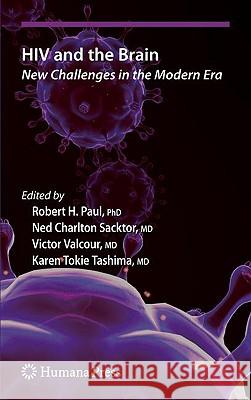HIV and the Brain: New Challenges in the Modern Era » książka
HIV and the Brain: New Challenges in the Modern Era
ISBN-13: 9781934115084 / Angielski / Twarda / 2009 / 350 str.
It is now more than a quarter century since the appearance of the f irst reported cases of the acquired immunodeficiency syndrome (AIDS). Although successful tre- ments with highly active antiretroviral therapies have made a major impact on survival, there still remains no vaccine for prevention and the available therapies do not cure the disease. As a result, AIDS has been transformed into a chronic, lifelong disease which requires continuous antiretro viral drug treatment together with ongoing treatment of the associated systemic medical complications. It appears that as survival improves, the prevalence of chronic central nervous system involvement may be increasing. As pointed out by the editors of this volume, this shift in emphasis requires further examination of how AIDS affects the brain in terms of cogniti ve function, neuropsychiatric manifestations, activities of daily living, and quality of life. They also go on to ask the interesting question of how AIDS involvement of the brain interacts with normal aging. In HIV and the Brain, Drs. Paul, Sacktor, Valcour, and Tashima have assembled an impressive international team of experts to summarize the current state of kno- edge concerning brain function in AIDS. Early chapters re view epidemiology, pathophysiology, neuropathology, neuroimaging, and HIV genetics follo wed by a series of chapters concerning the neuropsychological, behavioral, and neuropsyc- atric aspects of the disease.











